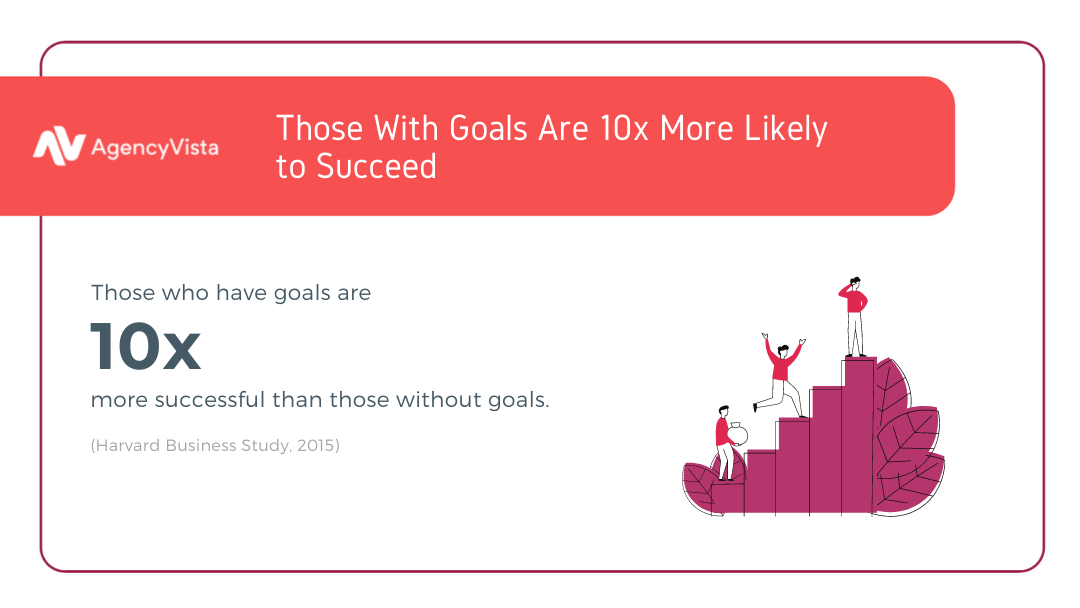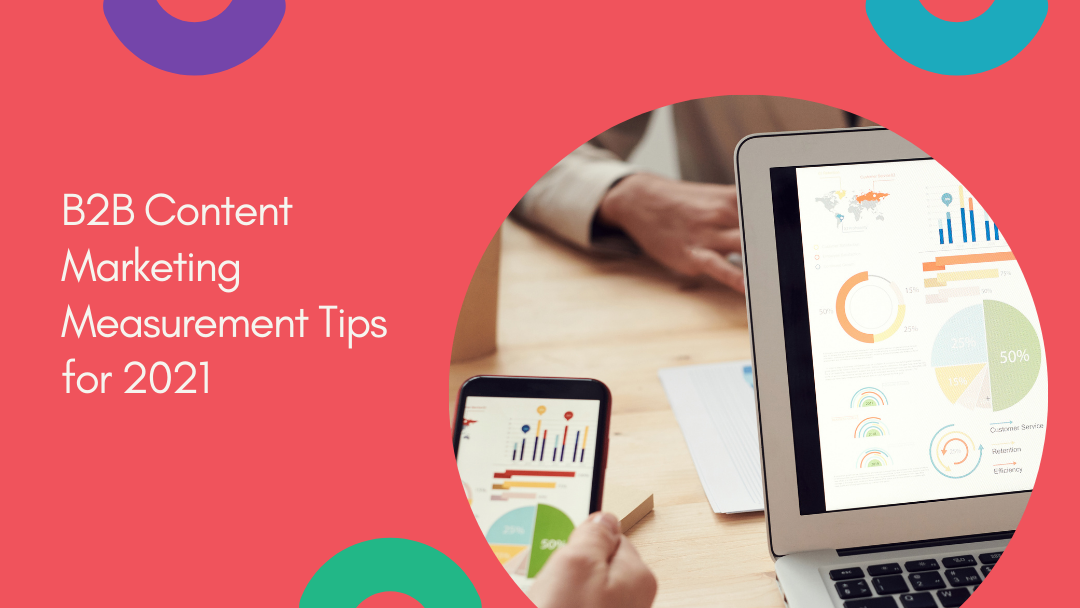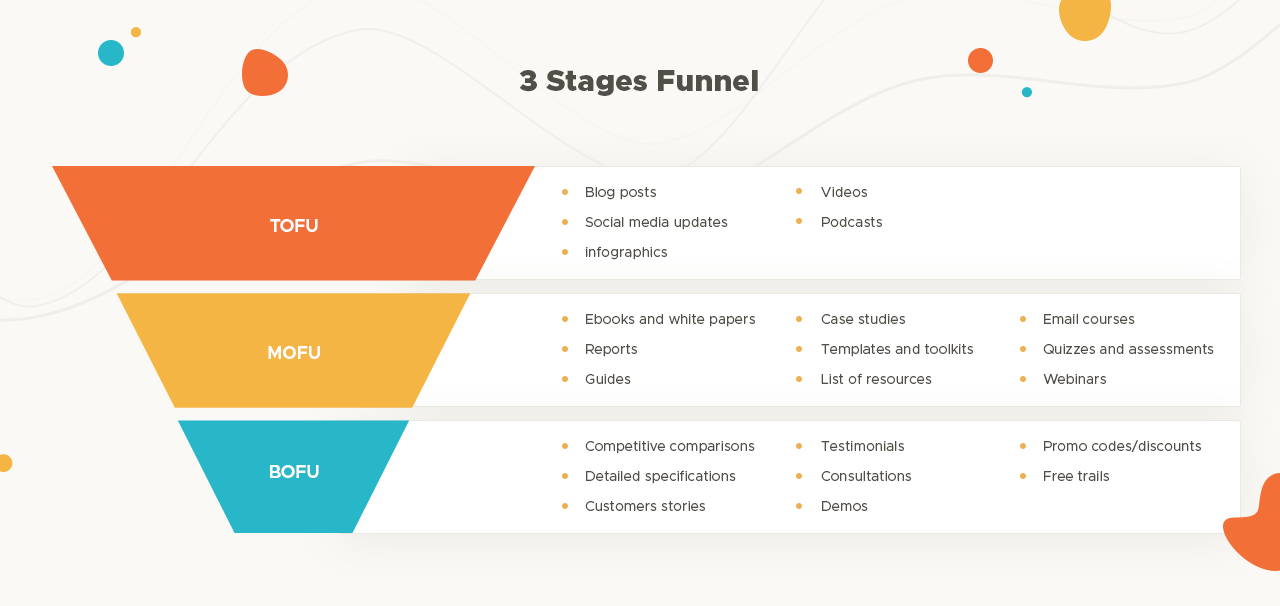B2B content marketing measurement allows marketers to understand the impact of their efforts and optimize campaigns for better engagement and more effectively attribute ROI. With so much competition online, it’s crucial for your business and your clients to maximize your existing efforts. There is always opportunities to test your online marketing to ensure that you are effectively marketing that produce or service.
However, with more digital channels available — it can be overwhelming analyzing so much data. You can find yourself reporting on performance, but are they the most important metric to your growth goals? Sometimes analyzing every key metric can hinder performance more than help. In this article we’ll cover the best B2B content marketing measurement tips in 2021.
Why Are KPIs Necessary For B2B Content Marketing Measurement?
Before deciding which metrics to track, it is compulsory to understand the goals and KPIs (Key Performance Indicators). Sometime as an agency you can find yourself with a client that tells you what KPIs they want you to report on, and they may not be the most important metrics for their growth goals. As marketer you may be aware of why KPIs are necessary for B2B content marketing measurement, but have a difficult time explaining this information to a client.
If your client is focused on bottom of the funnel growth, then the metrics for top of the funnel may not be as relevant. For example, if you’re running a PPC campaign on Facebook and trying to maximize conversions — then, you aren’t going to make optimizations based on CPM, instead you’ll focus on incremental ROAS.
Communicating this information to your client is crucial as it allows for better transparency between your companies. You don’t want your client thinking that you aren’t effectively managing their marketing, so it’s best to have a conversation about goals and reporting.
1. To Monitor Performance and Growth
It is crucial to identify primary goals for your client’s marketing campaigns. As marketers, you have access to copious amounts of data on digital marketing performance. Including all of this data in your client reports can overwhelm them if they aren’t as savvy with online marketing. It’s best to focus on primary goals to set realistic expectations, especially if you’re a performance marketing agency.

Content marketing goals should be completely aligned with the marketing strategy to yield a high IROI for clients. These are the overarching goals that all clients expect the campaign to deliver. Primary goals are non-negotiable and part of the initial deal between the agency and the client. At the end of the day, primary goals help maximize the marketing campaign’s efficiency and justify the expenses.
2. To Monitor Company Reputation
Focusing on certain KPIs will help in monitoring where your company stands with consumers. Obviously, every company would like to see an increase in all metrics all the time — but it’s not very realistic. Seasonal fluctuations, sales and promotions, and competition all affect digital marketing efforts. Although your business or your client’s may not see seasonal fluctuations directly, typically, competition increases for ad space during certain times of the year, which can cause an increase or decrease in certain metrics.
A single misstep can result in the closure of a multinational organization. For example, Peloton recently lost about $1.5 billion in value due to a single holiday advertisement although the COVID-19 pandemic will probably turn that around. Monitoring your company’s reputation is directly related to a businesses marketing strategy and quickly allow a business to turn a negative into a positive.
Sometime’s clients can be difficult and feel strongly about a certain approach to their marketing. But, overtime you may see in online reviews and comments that customers actually prefer something else. Setting KPIs can eliminate any conflict with suggestions to marketing optimizations as you’ll be focusing on the data.
3. To Solve Problems and Tackle Opportunities
If you’re a performance marketing agency and required to maximize an ad budget, you’ll want to be regularly optimizing your clients campaigns to ensure you’re pacing correctly for the end of campaigns term. If your campaign is overspending or underspending, having access to this information will allow you to effectively adjust bid strategies to maximize the campaigns budget. Checking in on your client’s KPIs can help avoid low performance and poor results.
On the flip side, setting KPIs can also help tackle new opportunities. If you’re noticing customers are more drawn to certain content pieces than others, then you’ll know what content to continue creating. Content creation takes a significant time, so it’s best to test out multiple forms of content with your target audience to see what sticks. Setting KPIs can allow you to see a full picture of new opportunities for your marketing.
How To Decide Which Metrics To Track?
With all the technology and software readily available, marketers can track almost anything online. However, just because you can, doesn’t mean you should. Metrics and excessive data can get highly confusing if not used correctly.
Always start with the measurement basics:
- Identify the primary client goals
- Identify top priorities – deliverables, content, conversion, engagement
- Establish performance benchmarks for comparison and analysis
- Calculate base costs to gauge ROI in the long term
Once these are put in place, you should ensure all team members understand and follow these essential metrics. Once the internal team and clients know these metrics, it will be easier to add more data points later. It will also allow teams to create, curate, schedule, and publish content according to the data metrics and evaluation points.
Audit and Inventory Existing Content Collateral
Formal measurement plans and metrics depend wholly on the identification, qualification, and categorization of all content needs and assets. Digital marketing agencies first need to audit and inventory the content that is already present. It becomes easier to measure and set performance benchmarks if you know about all the content available.
The best way to do this is to create a content inventory (a quantitative list) of all content assets previously published online via various distribution channels. Once this is done, you should conduct a qualitative audit that assesses existing content against user needs and client objectives.
Doing this effectively will help in streamlining the content strategy and enable you with solid content metrics. It is possible to identify strengths, weaknesses, and any potential gaps in the plan and can help convert visitors to the content into returning customers, thereby increasing the conversion rate.
B2B Content Marketing Measurement Strategies in 2021
1. Measurement by Goals
Some common goals and metrics should always be shared with the team. Having these goals handy will help keep the content strategy on track and allow quick evaluation and analysis.
Some examples of B2B content marketing measurement by goals are:
- Lead Generation: Email subscriptions, form completions, downloads, blog subscriptions, conversion rates
- Brand Awareness: Social mentions (chatter), Document views, website traffic, page views, referrals (links and mentions), video views
- Engagement: Likes/ tweets/ shares, comments on blogs and articles, inbound link clicks, forwards, viral posts
- Customer Loyalty: Renewal rates, percentage of content that is consumed by current customers (existing consumers)
- Sales: Manual reporting, offline sales, online sales
2. Measurement by KPI Types (Content Types)
Another excellent way of measuring content marketing is by analyzing and tracking key performance indicators according to the type of content.
Some examples of B2B content marketing measurement by KPI Types are:
- PPC Campaigns: Click-through rate, cost per click, conversions, conversion rates, ad positioning, cost per conversion, cost per sale, total spend, wasted spend, return on ads spend, impressions, quality scores
- Email: Conversion rate, email opening rate, subscribers, opt-out rate, churn rate, delivery rate, click-through rate
- Videos: Unique viewers, video views, average viewer duration, shares, comments, subscribers, traffic sources, YouTube CTA click-throughs, Impressions click-through rate
- Blog Posts/ Written Content/ Articles: Web traffic, new and returning visitors, unique visitors, average time on page, time on site, exit rate, bounce rate, page views, page views per visit, mobile viewers and visitors, traffic sources, geographic scrolling trends, desktop visitors, visits per channels, demographic trends
- Social Media: Post reach, conversion rates, applause rate, amplification rate, shares, tweets, likes, comments, mentions, return on engagement, landing page conversion rates, sharing posts percentage, organic and inorganic fans and followers
- Podcasts: Ratings, reviews, subscribers, downloads, backlinks, social shares, average listeners, average time on the podcast
How To Track B2B Content Marketing Measurements and Data
Content marketing is wholly measurable with the correct software, tools, data, and templates. As a digital marketer, you can identify key stakeholders, high-yielding content results, make efficiency changes to the content, and report to shareholders and top management.
1. Establish A Measurement Protocol
The prime concern with data is knowing when to collect it. Marketers can collect data daily, twice a week, once a week, fortnightly, or monthly. However, it is best to wait between collection intervals to gather meaningful data. Trends and patterns emerge with collecting qualitative and quantitative data schemes that come across only with gaps. If you collect the data too frequently, you may get lost in numbers and overlook some details that may affect content trends later. These minor issues can cause trouble later and hold you back from achieving your goals.
Having bulk data makes it easier to sort and analyze patterns and trends. To do this, you can use Google sheets to collate the data, templates, content automation software, and management automation solutions. Using this data, you can aggregate the data into a dashboard to show the team the performance metrics and analysis.
2. Measure Traffic
Traffic is the soul of content marketing. Digital marketing agencies have to ensure that they generate plenty of traffic to the client sites. If you see great results on your content, but no concrete action from it — then it definitely needs to be improved. You simply must measure traffic and make adjustments to the content strategy and creation.
Google Analytics helps track essential metrics such as:
- Users – the number of visitors who have initiated one session with your website or app within a specified period of time
- New Users – the number of users who have never visited your website before.
- Pageviews – the number of times your webpage/ site has been viewed
- Conversion data – conversions are also viewable on Google Analytics but need to be set up manually. Conversion data helps calculate the content marketing success rate.
- Bounce rate – this happens when a user lands on a website page and exits without triggering another request to the Google Analytics server.
You can use all this data to get an approximate idea about the traffic coming to the site from the content marketing strategies employed. It’s important to look at the sources and mediums that are bringing in the most site traffic. If one source is heavily pushing content but not producing much traffic to site, then you will need to revamp your strategy. Knowing which area generates the maximum traffic can help you tailor the content needs to suit users from that region and drive brand awareness.
3. Measure Conversions
Conversions are excellent methods to judge the viability of the site. Usability and conversion rates matter the most. Since users will come to your site, read the blogs, and enjoy the content, the real trick is understanding when they convert and from what.
This is where attribution windows are key, your content may drive users to site, but they may not follow through with completing the desired action that same day. It’s important to monitor how your target interacts with your marketing to see if your current strategies are effective. For most B2B businesses, conversions are directly related to sales or leads. B2B brands should constantly track and monitor these leads since such traffic will increase direct sales.
Businesses that use their websites to push sales should use Google Analytics by activating e-commerce and viewing page values of buyer behaviors. This feature will help you with the average revenue each landing page has generated after users have clicked on a purchase link. If not, you can also use this feature for other goals and performance metrics.
4. Measure Engagement
Engagement is measured by the ability to get people to follow the call to action. Many users do not make purchases but engage with the content. Engagement is also measured by the amount of time people spend consuming the content published. For digital marketers, engagement is as critical as conversion rates. While conversion rates help drive sales higher, engagement rates help keep the users interested, thereby ensuring they return to the site and share and talk about it.
Creating content for each part of a businesses sales funnel is crucial in the buyers journey. If a consumer is first learning about your brand, they generally aren’t going to make a purchase from the very first piece of content they interact with. But, certain content works for best for certain KPIs.
Engagement is also measured by how well the content does on social media platforms. The most crucial engagement criteria on social media are the total number of shares the content receives. A share will usually help more people view your content and possibly make it viral. While Google Analytics cannot help you with this, it is possible to track social engagement with the help of social media tracking software. Engagement from social media and traffic generated towards the website also help increase the conversion rates over a period. More clicks on social media will eventually lead to an increase in the conversion rates on the website since the brand will set up as an Authority.
Final Thoughts
Digital media experts need to measure content marketing and re-evaluate the strategy to increase efficiency and progress. Adjusting the content marketing strategy based on the response from the target audience is a fantastic way to ensure that the content marketing will run at peak performance throughout the year. Measuring the content metrics and analyzing all the data will benefit the ROI, conversion rates and eventually increase brand reputation and recognition.

